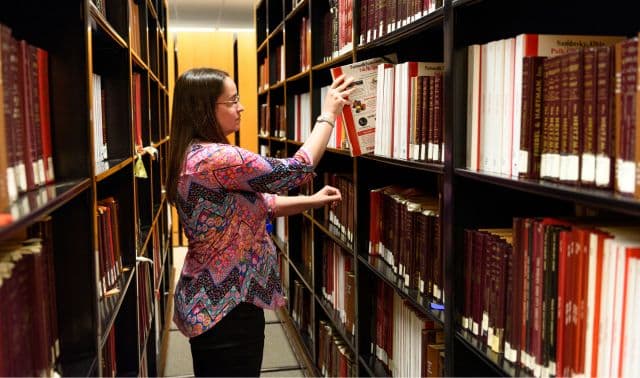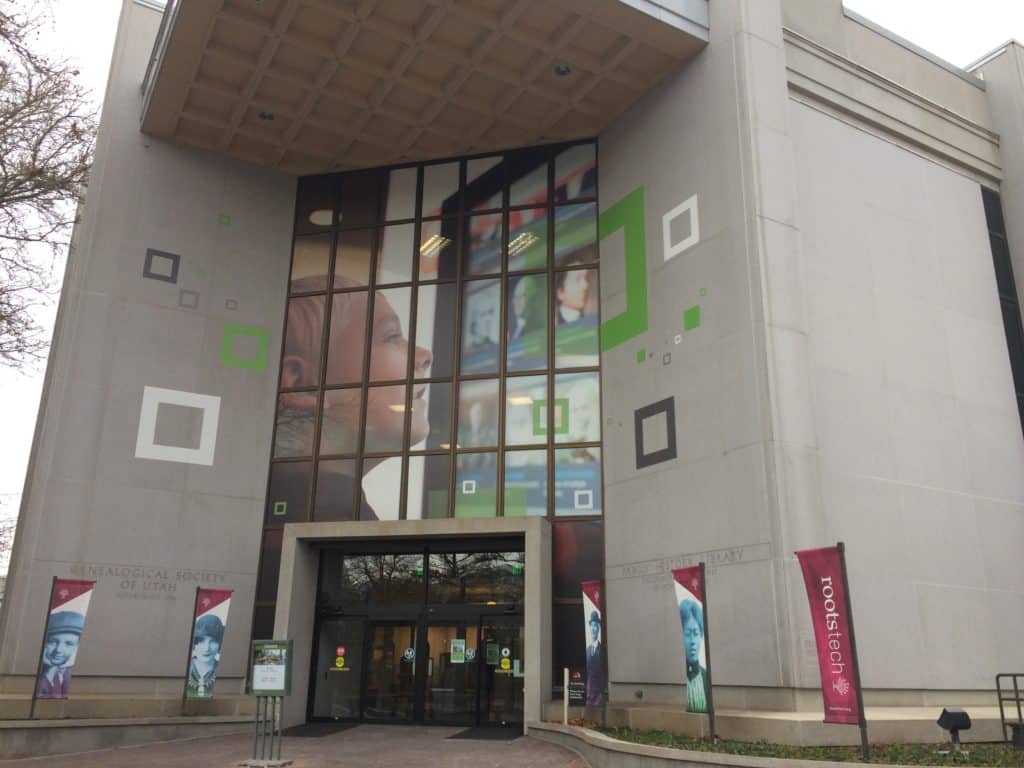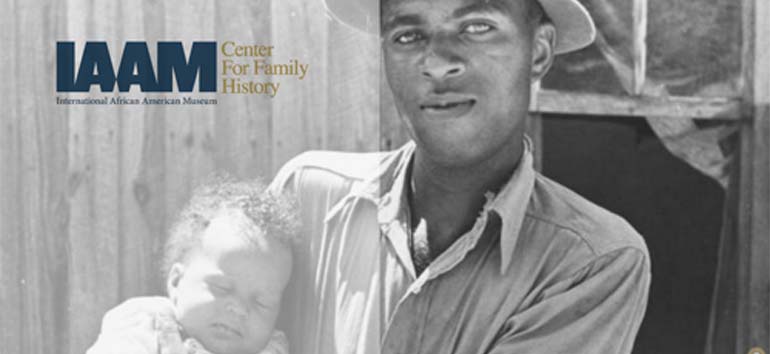Sign up for the Family Tree Newsletter! Plus, you’ll receive our 10 Essential Genealogy Research Forms PDF as a special thank you.
Get Your Free Genealogy Forms
"*" indicates required fields
 Living history parks and museums offer a glimpse into what our ancestors’ lives were like years ago. Depending on your destination, you may get to stroll through historical villages, do old-fashioned farm chores and ride a stagecoach or steam engine locomotive.
Living history parks and museums offer a glimpse into what our ancestors’ lives were like years ago. Depending on your destination, you may get to stroll through historical villages, do old-fashioned farm chores and ride a stagecoach or steam engine locomotive.1. Colonial Williamsburg
Williamsburg, Va. | <www.colonialwilliamsburg.com>
- If you have a few hours: Plan to spend at least a half day here. Start at the visitors center. Then take shuttle to the Colonial village, where you can visit homes of the town’s famous residents such as Declaration of Independence signatory George Wythe and business magnate John D. Rockefeller, Jr., or take a guided tour.
- If you have a day: Step inside the courthouse, tavern, capitol, governor’s palace and other buildings to talk to costumed tradesmen, shopkeepers, political figures, townswomen and slaves. Ask them about their jobs and daily lives—they’ll answer in keeping with the characters they portray. Witness revolutionists expressing their views in the streets, take part in re-enactments of court sessions and see a military demonstration of soldiers off to the battle of Yorktown. Kids can play games of the era, help with gardening and food prep, and dress in rentable period garb (ask at the Visitor Center).
- If you have more than a day: Visit the town’s two museums, inside the Public Hospital of 1773: one has exhibits of 18th- and 19th-century mental illness treatments, and another highlights antiques and decorative art from the 1600s to 1800s. Check out an evening event, too, such as a ghost tour, 1706 witchcraft trial or guided tour with pirate tales.
2. Conner Prairie
Fishers, Ind. | <www.connerprairie.org>
This interactive history park highlights life in the mid-1800s, with indoor and outdoor exhibits offering many hands-on opportunities for adults and children. Indoor exhibits are open year-round, and everything’s open from late March to early November. Admission prices here vary, depending on the season and what attractions are open. Summer season prices are $16 per adult and $11 for children ages 2 to 12. Balloon flights cost an additional $15 per person.
- If you have a few hours: Check out the 1836 Prairietown, where you’ll see a blacksmith, one-room schoolhouse, pottery maker and Whitaker’s Store. Costumed interpreters give classes in the schoolhouse, share local gossip and teach you skills of the era. Also visit the two-story homestead of settler William Conner, for whom the park is named. The 1823 home of the fur trader and Indiana statesman is believed to be one of the state’s earliest brick buildings.
- If you have a day: Stop by the Loom House near the William Conner Homestead to learn how to spin and dye yarn. Don’t miss the Lenape Indian Camp, where you’ll see canoes and wigwams and listen to music of water drums and gourd rattles. In addition, check out the 1863 Civil War Journey exhibit, where you can cross a covered bridge, help gather soldiers’ supplies and participate in military drills.
- If you have more than a day: Try your hand at an old-fashioned craft: make soap, use an antique printing press, decorate quilt squares or weave fibers. New for 2015 is Conner Prairie’s 1859 Balloon Voyage, an area dedicated to the story of John Wise, a balloonist who attempted America’s first airmail delivery from Lafayette, Ind., using a hot air balloon. The Balloon Voyage area showcases a re-created downtown Lafayette town square with a post office, dry goods store, pharmacy and photo studio, as well as displays about the science of ballooning. Visitors even can take a hot air balloon flight.
3. Greenfield Village
Dearborn, Mich. | <www.thehenryford.org/village>
If you’ve seen CBS Saturday morning TV shows, you might already be familiar with this destination featured in “The Henry Ford Innovation Nation” with CBS news correspondent Mo Rocca. Greenfield Village, near Detroit, showcases historic buildings and homes that Henry Ford had moved here from their original locations, as well as exhibits on transportation and innovation history. An interactive map can help you plan your visit. Admission to the village (including the historic homes) is $25 per adult and $18.75 for children ages 5 to 12. An unlimited daily ride pass is $16. Admission to the Henry Ford Museum, IMAX theater, and Ford Rouge Factory Tour is additional, ranging from about $16 to $20 per person.
- If you have a few hours: Stroll the streets of the village and stop by Noah Webster’s home (where he wrote the first American dictionary), a courthouse where Abraham Lincoln practiced law, a bike shop owned by the Wright Brothers, a home where poet Robert Frost lived and several houses of varying types from the 1650s to the 1930s. Plus, see working farms with demonstrations of 19th-century farm chores, an old sawmill and shops. A 1931 Ford Model AA bus chauffeurs visitors from site to site within the village.
- If you have a day: Be sure to visit all the buildings that showcase innovations in America, such as Thomas Edison’s laboratory and the replica of the factory where Henry Ford built his first automobiles. Take advantage of interactive experiences: Go for a spin in a Model T, watch 1867 baseball, ride a 19th-century steam engine train through the village and whirl around on a 1913 carousel.
- If you have more than a day: Explore the Henry Ford Museum, which has exhibits highlighting artifacts from American history, such as the limousine carrying John F. Kennedy when he was assassinated, the bus where Rosa Parks stood her ground, a camp bed George Washington slept in during the Revolutionary War, and historical and replica airplanes from 40 years of aviation history (including a replica Wright Flyer and a 1939 Sikorsky helicopter). The Benson Ford Research Center also lets visitors access its archives focusing on innovation and the American experience.
4. Nevada City Living History Museum
Virginia City, Mont. | <www.virginiacitymt.com/living.aspx>
This Gold Rush-era living history museum showcases 100 buildings from 1863 to the early 1900s. On special Living History weekends throughout the summer, costumed interpreters portray events that happened in the mining town of Alder Gulch (located near Virginia City and Nevada City). There are sights to see in all three towns. Admission for living history experiences at Nevada City is $10 per adult and $8 for youth. Train rides are separate, and combo tickets for sites and train rides are $16 for adults and $12 for youth. Couple, family and senior day passes also are available (and include panning for gold) starting at $35.
- If you have a few hours: Check out the frontier mining town of Nevada City, which includes homes, barns, a railroad depot, dry goods store, bakery, fire station and other structures. Take part in hands-on activities such as preparing an old-time recipe in one of the cabins, working with the town blacksmith or playing 1860s saloon games. You might even witness local events such as a miner’s court trial.
- If you have a day: Ride the train to neighboring Virginia City, where you can hop on a 25-minute narrated stagecoach tour of Alder Gulch and hear tales of stagecoach robberies and striking gold.
- If you have more than a day: Stop by the Nevada City Cemetery, or attend the theater to see the Virginia City Theatre Co. put on an authentic 19th-century melodrama. Also check out the River of Gold Mining exhibit and pan for gold at a mining dredge between Virginia City and Nevada City.
5. O.K. Corral
Tombstone, Ariz. | <www.ok-corral.com>
The Gunfight at the O.K. Corral, one of the most widely known shootouts in the American West, was made famous by movies such as the 1993 Tombstone. Here, you can learn about the events that led up to this gunfight (which didn’t actually happen at the corral), as well as the town of Tombstone’s silver mining history and the great fire that destroyed much of the town in 1882. This destination is located about 70 miles southeast of Tucson, Ariz., so account for travel time in your plans. Admission, including the a gunfight re-enactment, is $10; children under age 6 are admitted for free.
- If you have a few hours: See a re-enactment of the gunfight between lawmen Wyatt Earp, Doc Holiday, and Virgil and Morgan Earp, and cowboys from the Clanton and McLaury families.
- If you have a day: Walk through Tombstone and the O.K. Corral as they appeared in the 1880s, tour a gallery with old photos of Apache warrior Geronimo and others, and have the town blacksmith stamp your name in an old horseshoe. A museum of Arizona’s oldest newspaper holds the original 1881 reports of the gunfight and exhibits on newspaper printing in the 1880s. You also can ride in a stagecoach and pose for old-fashioned family photos.
- If you have more than a day: Visit other sites in Tombstone, including the Tombstone Courthouse State Historic Park and the Boothill Cemetery to see the graves of the men who died in the famous gunfight.
6. Old World Wisconsin
Eagle, Wis. | <oldworldwisconsin.wisconsinhistory.org>
Located a short drive from Milwaukee, visitors can experience 1880s farm life and see a 19th century rural village. The site is open May through October. Admission is $19 for adults, $10 for children 4 to 12, and free for younger children. Senior and student discounts are available.
- If you have a few hours: Visit a German farm and get your hands dirty as costumed interpreters guide you through typical chores, teach you about the livestock and show you how to use old-fashioned farm equipment. Attend class in a one-room schoolhouse and try 1890s cycling by peddling a reproduction tricycle.
- If you have a day: Stroll through the Crossroads Village to see an 1870s blacksmith and shoemaker and talk to the local general store shopkeeper. Purchase a “coin” to buy old-fashioned sodas and food at the store. Explore all the ethnic areas that feature what life was like for African-Americans as well as Polish, German, Czech, Welsh, Irish, Danish, Finnish and Norwegian immigrants.
- If you have more than a day: Come during a designated week, weekend or month in the summer to try games from the late 1800s, including golf, croquet, football and basketball; see how Laura Ingalls Wilder lived (June and July); or catch a vintage “base ball” game (select Saturdays). Old World Wisconsin also offers kids’ adventure camps and adult workshops in historical skills such as rug-braiding and Norwegian spoon carving.
7. Plimoth Plantation
Plymouth, Mass. | <www.plimoth.org>
This destination tells the story of Plymouth Colony, where the pilgrims landed in 1620. Admission prices vary depending on the specific sites you wish to see. A summer season combination ticket to view all three sites (Plantation, Grist Mill, and Mayflower II) is $36 for adults and $22 for children ages 3 to 12. Passes also are available to see just one or two sites.
- If you have a few hours: Start at the Visitor Center and watch an orientation film, and then wander the streets of a 17th-century English village to see more than 14 re-created structures. You can interact with costumed interpreters portraying actual residents of the colony and see daily cooking and chore demonstrations. Also explore the Wampanoag Homesite, which showcases the lives of this American Indian tribe in the 1600s.
- If you have a day: After visiting the main Plimoth Plantation, drive to the site of the Mayflower II, a reproduction of the ship that brought settlers to the Plymouth Colony. Take a tour to learn the stories of its passengers and crew.
- If you have more than a day: While you’re at the main plantation, visit the Craft Center for a lesson in the basic necessities colonists made by hand, such as candles, woven cloth, furniture, tools, baskets, pottery and more. Then stop by the Plimoth Grist Mill for a corn-grinding demo and a look at the mill’s inner workings.
8. Shaker Village of Pleasant Hill
Harrodsburg, Ky. | <shakervillageky.org>
Although you won’t see costumed interpreters here (except for musicians), you’ll find plenty of historical sites and experiences to give you a glimpse of life in this historic religious community. Members of the United Society of Believers in Christ’s Second Appearing first settled “Shakertown” in 1805 and lived here until 1910. Located about 25 miles southwest of Lexington, Ky., the village has more than 3,000 acres and 34 original structures in three distinct areas: the Historic Centre, the Farm and the Preserve. Admission tickets include access to all three areas and cost $10 for adults and $5 for children ages 6 to 12. Riverboat tours, wagon rides and other activities cost extra.
- If you have a few hours: Check out the daily activities in the Historic Centre and on the Farm, which could include hands-on experiences like making a Shaker broom, spinning wool into yarn, tending the vegetable garden and gathering eggs at the Farm.
- If you have a day: Listen to live performances of Shaker songs and hymns, and take an hourlong narrated riverboat ride from the Shaker Landing or a wagon ride through the Historic Centre.
- If you have more than a day: Hike among native wildlife and plants in the Preserve, where trails pass scenic overlooks and the remains of Shaker mills. Depending when you visit, you also could attend a Bluegrass music festival, antiques show, craft fair, harvest festival, holiday celebration, choral concert by the Pleasant Hill Singers or an other event. Book a reservation to dine on produce from the village garden at the Trustee’s Table and check out the seasonal Shaker-inspired art exhibitions in the Centre Family Dwelling at the Historic Centre.
9. Stone Mountain Antebellum Plantation & Farmyard
Stone Mountain, Ga. | <www.stonemountainpark.com/activities/attractions/Antebellum-Plantation-and-Farmyard.aspx>
This destination, a living history park within a larger park, features original buildings from across the State of Georgia dating between 1783 and 1875. The houses display period furniture and offer a glimpse of life in 18th- and 19th-century Georgia. Admission is $10 to see individual sites, or you can purchase an Adventure Pass (which includes multiple attractions and seasonal live entertainment) and start at $25.95 for adulst and $19.95 for children.
- If you have a few hours: Take a self-guided tour of the 19 restored buildings, see (and smell) a working cookhouse and stop by the blacksmith shop to see demonstrations. Visit the Confederate Memorial Carving, a sculpture that includes Civil War figures Jefferson Davis, Gen. Robert E. Lee and Gen. Thomas “Stonewall” Jackson.
- If you have a day: Go inside the kid-friendly farmyard to learn about livestock in early Georgia, ride aboard a 1940s open-air locomotive on a 5-mile narrated trip around Stone Mountain, and stop by the circa-1850 grist mill.
- If you have more than a day: Visit the Stone Mountain Museum at Memorial Hall to take in the history of the mountain, go to an outdoor quarry exhibit to discover the quarrymen who played an important part in the mountain’s history, attend a concert of the 732-bell carillon that was featured at the 1964 World’s Fair in New York City, or cross a century-old pine-and-cedar covered bridge. Step into the present day in the surrounding park, which has hiking trails, picnic areas, miniature golf and more.
10. This Is the Place Heritage Park
Salt Lake City | <www.thisistheplace.org>
Travel back in time to an early settlement of Utah Territory, showcasing more than 50 historical homes and structures. There’s also a Deseret News print shop that has a working replica of the press used to print its first newspaper in 1850. Summer admission prices are $11 for adults and $8 for children age 3 to 11 for Monday through Thursday, and includes three activities (such as crafts, pony rides or mini-train rides). Tickets costs less on Sundays ($5 for adults and $3 for children).
- If you have a few hours: Ride the train through the Heritage Village for a great view of original and replica buildings, including Brigham Young’s barn, a blacksmith shop, telegraph office, cabinet and chair shop, boot shop, tinsmith shop, social hall, livery stable, replica grist mill and others. Also visit the Native American village, where you can grind corn, see ceremonial dancers and make a craft such as an arrowhead necklace.
- If you have a day: Take a walk through the town and talk with costumed interpreters at the shops and pioneer homes. Participate in hands-on activities such as panning for gold, milking cows and other chores, or passing pails of water in a bucket brigade.
- If you have more than a day: Pay your respects at the Pioneer Cemetery, where gravestones of early pioneers have been moved. Take one of the other two train rides offered, and watch out: You might just witness a train robbery.





